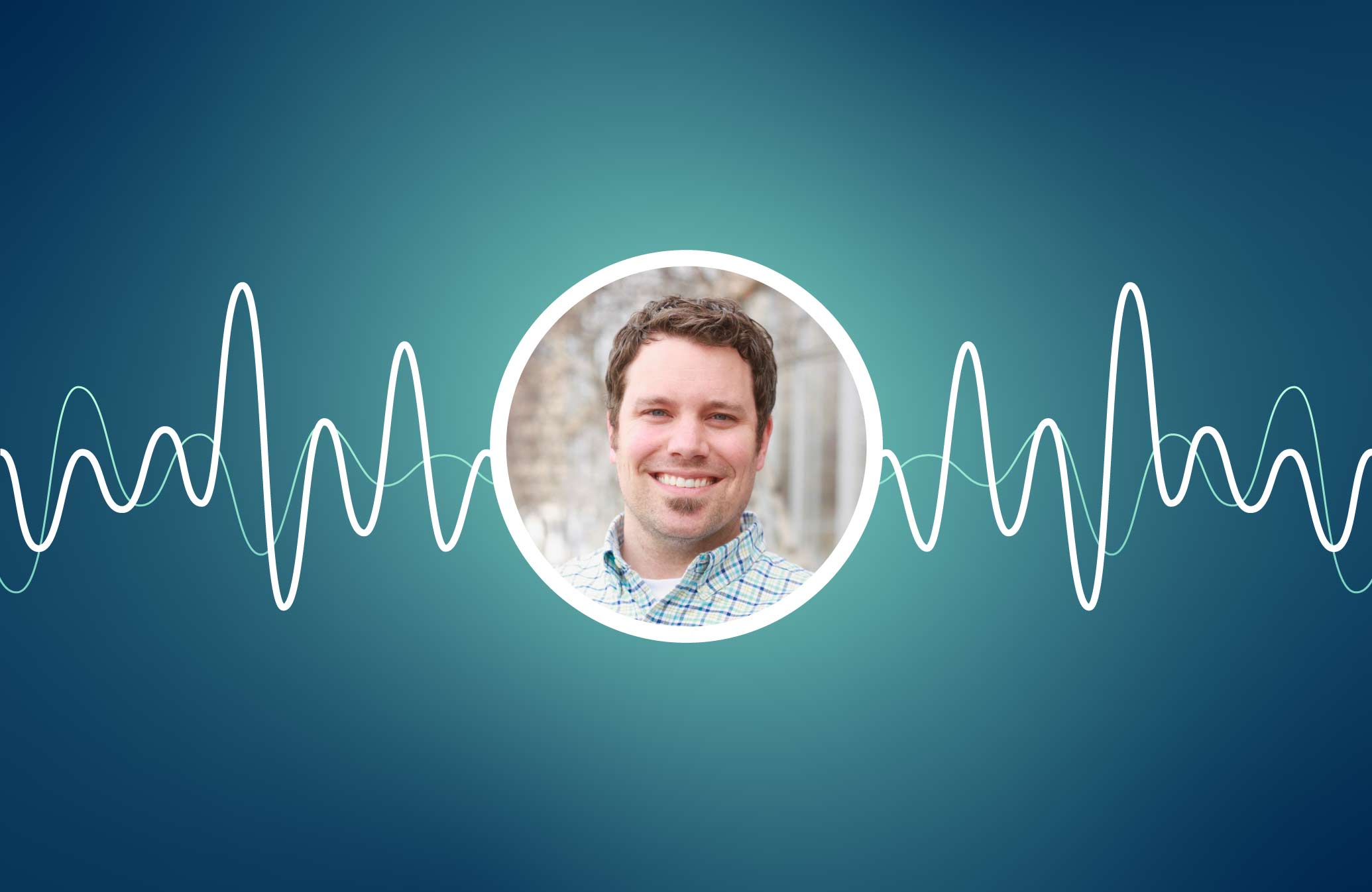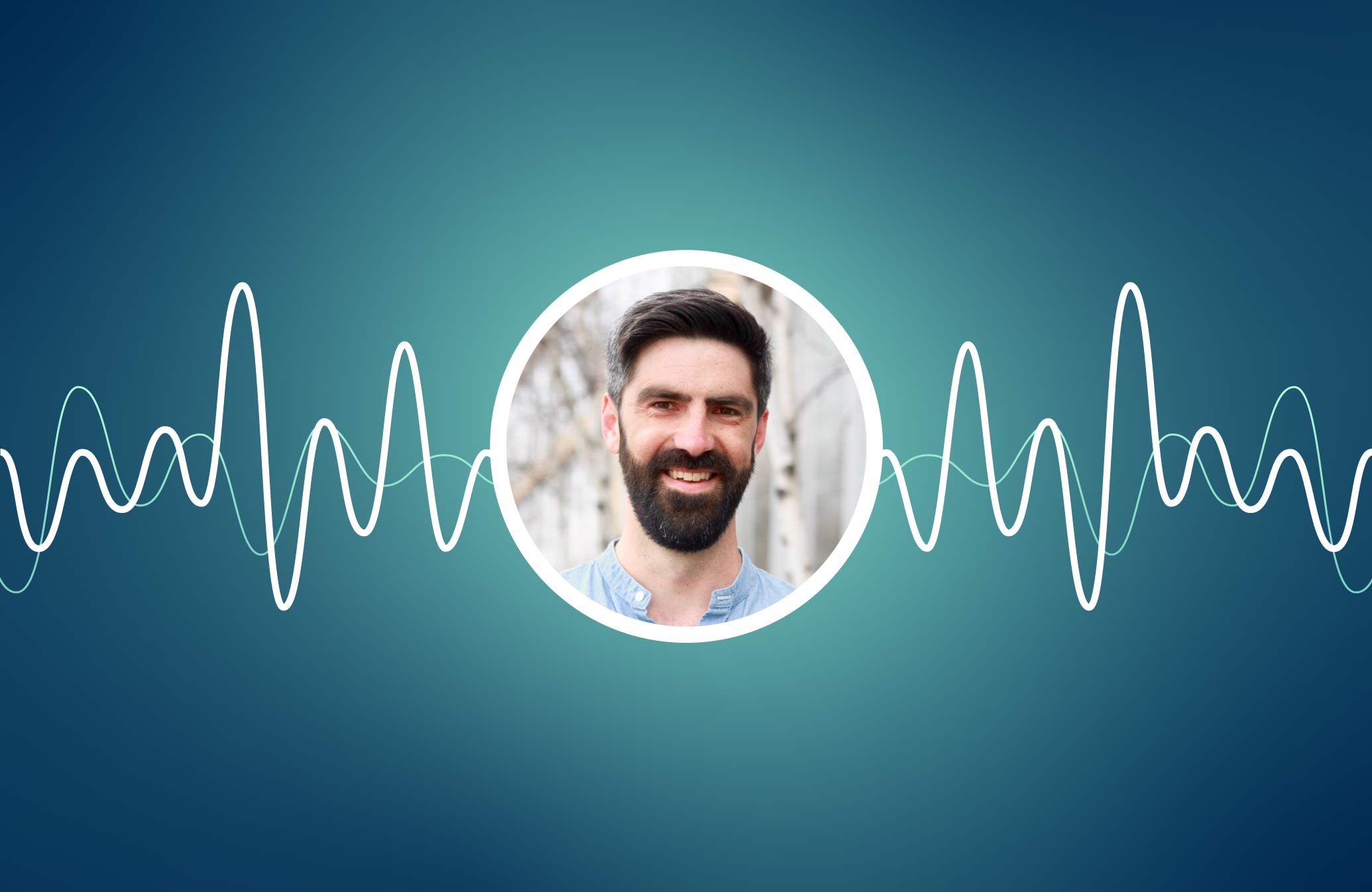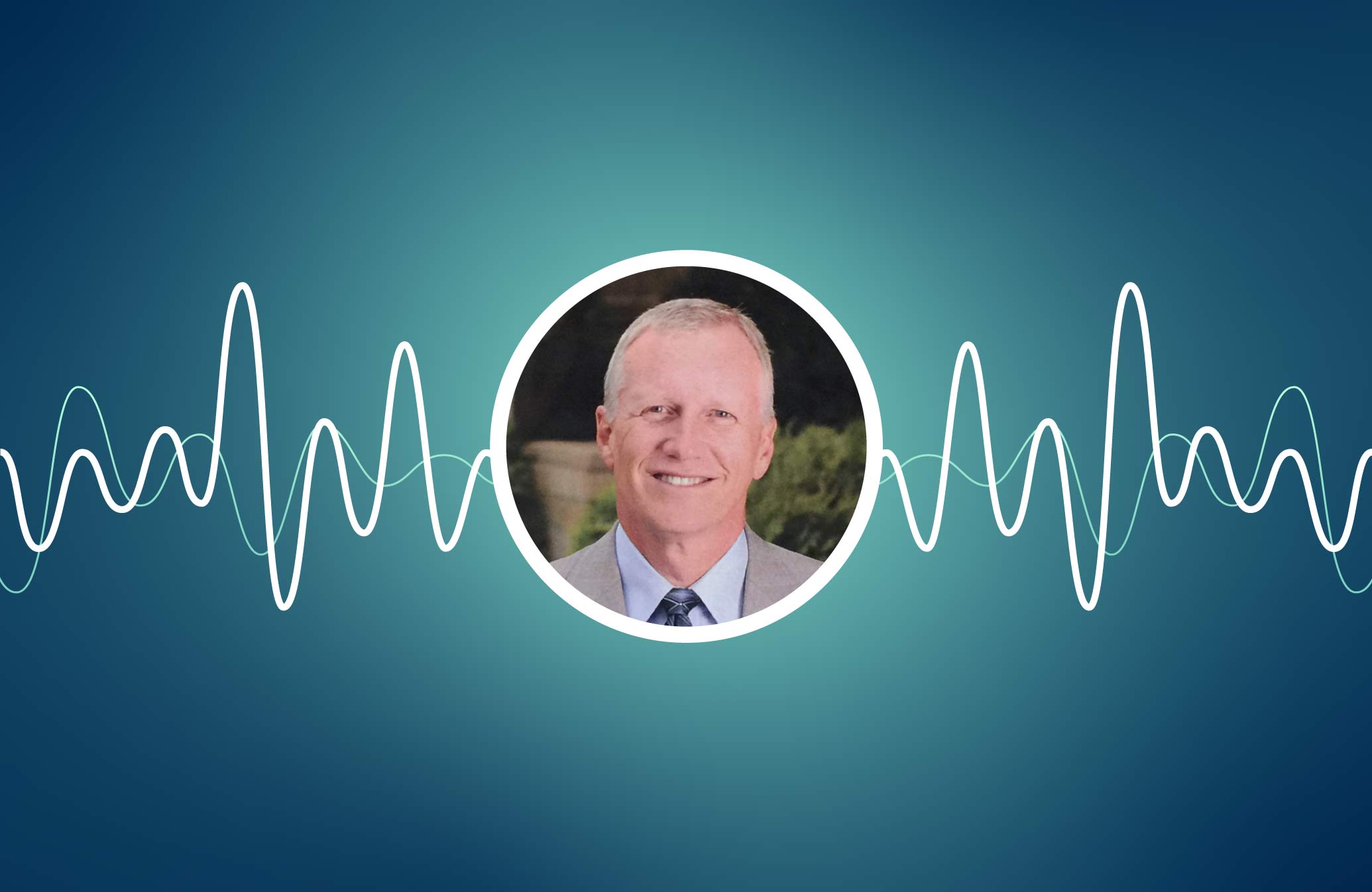Listen Now
Episode Transcript
Announcer [00:00:00] Welcome to RadioRev, podcasting from the heart of healthcare in Minneapolis, Minnesota. This is the podcast for change makers looking to do more than just health engagement. It’s about getting people to take action and do things that actually improve their health. It’s a radical idea, right? So we’re talking with the leaders, innovators, movers, and shakers who are bringing new ideas, inspiring others, and leading the way.
Jenn [00:00:26] Today on the show, we have Genevieve Hall, our human-centered design expert, talking with Peter Eliason, Director of Analytics and Data Science here at Icario. This week, Peter was at Forrester’s Data Strategy & Insights Forum, and he’s going to share his top takeaways with us. Welcome to the show.
Peter [00:00:42] Thank you. I appreciate it, Jenn.
Genevieve [00:00:43] Thank you for having us.
Peter [00:00:46] Excited to be here.
Genevieve [00:00:47] We’re gonna start this off with a little fun.
Peter [00:00:50] I like fun.
Genevieve [00:00:51] What’s your favorite ’80s song?
Peter [00:00:53] Yeah, a lot of good ones to choose from. I’m going to have to go with Journey, “Don’t Stop Believin’.” Inspirational. I feel like there’s a lot of good moments in the song where I got to get my lip grab going on. So it’s hard to beat that.
Genevieve [00:01:24] That is so good. So let’s start this off. This was Forrester’s first Data Strategy & Insights Forum. What was the primary reason you felt it was important to attend?
Peter [00:01:37] Yeah, it was surprising. This is the first one that they’ve done, but they really did a great job with it. They did a great job with lining up some great presenters that all had very important, diverse messages that they wanted to talk about. I think some of the big things that I took away were that one, there’s a difference between being data-driven as an organization and being focused primarily just on the academics of learning. And there’s an additional step that’s required, and that’s driving that data into action. And so we talked a lot about a data-driven organization versus insights-driven organizations. Ultimately, that just means the things that you’re learning aren’t valuable unless we actually do something about them and make decisions based on those decisions or take action based on the data that we garner. A lot of things that they talked about as well is the notion of a maturity curve. And so organizations are interviewed and analyzed, and Forrester will plot them all on a spectrum in terms of how mature are organizations, in terms of how well they use data, how well they value data, and how they make decisions based on that data. And so it’s a way for organizations to understand kind of within their industries what are competitors doing well? Where do we sit as an organization? What can we do to improve? Another important theme that I walked away with was the concept of test and learn, something that we certainly talk about a lot within Icario. But it’s something that is important for every organization to be thinking about as they continue to grow and improve. It’s difficult just to make decisions without having fundamental reasons why. And a test and learn culture is absolutely the best way to make sure that we’re making informed decisions and moving in the right direction.
Genevieve [00:03:48] Did you find out about other organizations doing that?
Peter [00:03:51] Yeah. There were a lot of different organizations that presented beyond just the Forrester analysts themselves. So it was nice to hear real experiences from different organizations. And so there were a lot of use cases that organizations were able to talk about in terms of their journey with analytics and their journey of moving toward an insights-driven organization. A lot of people aren’t there yet. There are a few that are. But it was really great to be able to have the context and level of transparency so that we can think about how do we get there ourselves?
Genevieve [00:04:28] That’s awesome. Can you tell us a little bit about the attendees from an industry perspective, role, or however you want to describe the group?
Peter [00:04:38] Yeah, I was surprised. There were not a lot of healthcare attendees at the conference. There were certainly many from retail, from banking, from the financial sector. But not a lot from—I didn’t meet many folks from healthcare at all. And so to me, that was concerning. There is certainly an opportunity for healthcare industries to begin to use the data that they have and to continue to drive the test and learn culture within their organizations. And so I hope that next year we’ll see more and see that trend grow. But not a lot this year.
Genevieve [00:05:21] That’s kind of cool for Icario though. Or is it?
Peter [00:05:24] Yeah. It certainly allows us an opportunity to insert ourselves and help coach organizations in terms of what being insights-driven looks like and help them think about how do they frame their organizations to accomplish similar goals?
Genevieve [00:05:41] Did you get to talk at the conference?
Peter [00:05:44] I didn’t talk at this one. But maybe that’s something that we can think about next year, because I think we have some interesting things that we could share that would be valuable to other people as well.
Genevieve [00:05:56] Celebrities—were there celebrities there?
Peter [00:05:59] In the realm of data and analytics, there were certainly celebrities. But no big TV stars or anything like that.
Genevieve [00:06:10] No Kardashians?
Peter [00:06:12] Unfortunately not.
Genevieve [00:06:15] That’s probably for the best. A big part of Forrester’s message at the forum surrounded the characteristics of a truly insights-driven enterprise. What was your take on this?
Peter [00:06:29] One thing that I took from this was that there are a lot of diverse players that are required to enable insights. One of the Principal Analysts that presented, his name was Brandon Purcell, he used the Beatles as a band to describe what it takes to have a truly insights-driven organization. So the combination of John, Paul, George, and Ringo formed the band. They each played their specific roles. But together, they were able to make great music. And so he described that as a relation to how data organizations could be structured. So we have individuals that can be storytellers with data. We have individuals that are data scientists building predictive models. There are data engineers that are required to move data around, and data visualization experts. So a group of individuals coming together to create a data-informed practice is really important. There’s not a single individual that has all of those skills. And so being cognizant of that; it takes many people to bring their own unique traits and diverse background and interests together to move it forward.
Genevieve [00:07:46] Following on in this train of thought, why is it important to leave behind a stovepipe integration strategy and move to an enterprise-driven strategy?
Peter [00:07:56] Yeah, this is certainly something that many organizations struggle with every year. There continue to be new sources of data. There continue to be reorganizations, acquisitions that occur within different organizations. And being able to have a capability that spans all of those pillars is very challenging. I think one thing that I heard from several specific organizations—and so this again, this is not the Forrester people talking, this is actual organizations talking about their models—they employ what’s called a hub-and-spoke model. And so if we think of the spectrum of having a centralized analytics team to a decentralized analytics team where each department or group may have its own team of analysts and data scientists, a hub-and-spoke is kind of a hybrid approach of both. And so that allows a bit of centralization, a bit of, I would say, an area where individuals are able to be more of a third party versus getting direction and occasionally pressure from a particular department to report things a specific way. I think there were folks that talked about how, when an analyst resides within each department themselves and it comes time to take credit for marketing efforts, each department tries to attribute success of a particular campaign, probably beyond what is real. And so when we look at incremental sales driven by each department, the sum of those is greater than the actual campaign itself. And so I think that’s hard, when the analysts are all within the same department. So by moving more toward a centralized or hub-and-spoke, we’re able to take more of an objective approach to understanding what the real answer is so that the organization as a whole can make better, more informed decisions.
Genevieve [00:10:08] Can you explain what we mean by data storytelling?
Peter [00:10:11] Yeah. Thanks for asking. That’s such a great question, Genevieve. A report alone will never be good enough to stand on its own. And so what I mean by that is, an individual creating a table or a report and handing it off and saying, “The result speaks for itself” is very naive. People interpret things differently, or the data may not jump out the way that it’s supposed to. And so being able to tell the story behind the data is absolutely important. So a good analyst or data scientist really needs to be able to draw an emotional connection to the data. And ultimately, that will manifest itself in the form of a story. I think people are drawn to stories. So I think of my kids, for example. They love stories. They’ll ask questions when I’m telling a story. They want to understand what’s going on, and they really become immersed. But if I—on the other hand—if I tell them to go do something like, “Hey, go make your bed” without any context, I don’t get any attention that way. And I think people don’t necessarily grow out of that. I think they don’t grow out of being enamored by a good story. And so that’s important for analysts and data scientists to continue to think about is how do we continue to use data and tell stories with it to ultimately make that emotional connection?
Genevieve [00:11:42] Who do you need to tell this story? Who on the team do you use when you need…?
Peter [00:11:49] It’s…really, really effective messages I think are a group effort, because it’s one thing for an analyst to have in his or her head, “What do I see with the data?” and then try to explain it one way. But then getting some feedback from team members in terms of, “Here’s what I heard you say, and here’s what it means to me.” I think that can be very useful so that that message can apply. You have a higher likelihood of that message resonating with somebody else right after you get feedback. And I think, again, it takes a team, takes the whole band to be able to communicate with data. And so I would say there’s other individuals that might be better visualizing with that data. There are probably others that are better at being able to design a slide or design a story that resonates with that particular data. And I think everybody can play a role to drive really important messages home.
Genevieve [00:12:51] Cool.
Peter [00:12:52] Do you like data, Genevieve?
Genevieve [00:12:52] Love data. I love turning it into visuals.
Peter [00:12:56] That’s good.
Genevieve [00:12:57] Data. Storytelling. How modernized are most healthcare organizations’ data environments?
Peter [00:13:09] It’s tricky with healthcare. There’s really a lack of standardization that I’ve seen. There are many acquisitions that occur during the course of an organization’s lifetime. And those things contribute to data existing in different formats and having different business rules. And so for an analyst who needs to be able to tell the stories of data and performance across the company, it’s difficult or occasionally even impossible to do so. And also HIPAA makes this very—it’s incredibly important, but it makes it very difficult to be able to have a consistent data environment that’s able to achieve whatever goals or whatever questions an analyst may throw at it. So in order to get around that, it really requires leadership buy-in. And I think we’ve seen that organizations that invest in data solutions and that make analysis easy and allow data to be accessed across the different silos, those are the organizations that are performing better. And so that’s certainly something that needs to be considered as part of any IT or strategic data solution in the next year.
Genevieve [00:14:43] Is that why there weren’t many healthcare companies at this?
Peter [00:14:47] Yeah. I think it really is a challenge for many healthcare organizations. That said, it can be done. There was one individual that presented. She is a Chief Data Officer. I don’t think I can share her name without her permission. But on her team she employed data scientists, storytellers, visualization experts, trainers, and integrators, which are more or less value stream individuals that are trying to identify areas within the organization where analytics or data science can play a role. And I think she had a really fantastic model in terms of how a data organization can exist and thrive within a healthcare organization. Another idea that she had that I thought was really cool was she held a hackathon last year for the first time ever using whatever ideas that were organically designed from the group. I think there were 60 people she said that participated, and like 12 groups. And so this hackathon was focused on different analytics ideas or data challenges within healthcare, within her company. And two of the ideas actually received great feedback and went to the board, and the board approved both of them. And they’re actually being rolled out this year. So I think it’s a great—it’s a really fascinating example of giving a data team the authority and the freedom to think about, this is something really cool that we could try, could actually yield great results that get buy-in from the top. So it is possible. And once leaders can begin to trust their teams and position their teams in a way that allows them to be successful, great things can happen.
Genevieve [00:16:52] That’s really cool. I know they do that in other industries, the hackathons.
Peter [00:16:55] Yeah.
Genevieve [00:16:56] But in healthcare?
Peter [00:16:56] Who knew?
Genevieve [00:16:56] Making waves. Were there any speakers who struck you as particularly really forward thinking?
Peter [00:17:08] There were a bunch. There were a lot of really great ideas coming from the conference. I think there were two that that I really liked. The first one, an individual named Kjell Carlsson. He is a Principal Analyst with Forrester, but he talked about AI and being able to drive to business insights using AI. I think one of the things that was cool for me is he was able to tell the story about what AI really means in a business context. One of the things that stuck out was that it’s really the automation side of achieving data science and achieving machine learning where we can begin to realize the benefits of what AI is. I think organizations can realize value from machine learning and from predictive modeling. But the automation of those components is really where we begin to industrialize the value of those things. And so once that happens, then we can feel like we’ve achieved AI. So I think that was kind of cool, to formally coin that term. And I can say I haven’t seen or heard AI defined as succinctly as Kjell did, so that was nice to have that. And then another individual, her name was Fatemah Khatibloo. She was another Forrester analyst talking about what’s called a digital twin. And so in many industries, a digital twin is a digital representation of a widget or an object. And so different industrial companies will create a digital twin of a particular machine, of a serial number, of something that they’ve built. And they’ll capture data of this machine or object as it’s being used and simulate that within a data entity so that they can begin to think about when is this machine going to need repairs or what’s the lifespan of this machine? So as those sensors on that machine are continuing to send data back to the data environment, the digital twin is replicating what’s happening in the real world. And so that allows the organization to understand what’s the next best thing that we can potentially predict or recommend for this individual based on what we’re seeing as the usage patterns of this machine. And so the digital twin, in terms of a human context, Fatemah recommended that organizations have data about us as humans and that they can use that personalized digital twin to recommend features on our behalf. But it’s more so to recommend things that we would want. So recommend things that align to goals or needs that we as humans have beyond just blasting marketing. So think about the fact that New Year’s is coming up. This is one of her examples. New Year’s resolutions. And people generally want to lose weight or something like that. So that’s certainly something I think about every year. And so maybe a recommendation that Google Maps could make is don’t have routes that take us by a fast food chain on the way home. Or suppress ads for unhealthy food and maybe bubble up ads that are more around healthy food. So things like that where an organization is able to drill into what a personalized digital twin is and make recommendations or create experiences that act on the individual’s behalf. I thought that was pretty cool.
Genevieve [00:21:20] They could send you on a route through the flu shot areas.
Peter [00:21:24] There you go, yeah, you bet!
Genevieve [00:21:27] Did you experience any ‘aha’ moments during the conference beyond the takeaways?
Peter [00:21:34] Yeah. There were a lot of things that were really, really interesting that I was able to think about and take notes about. The first thing is that data prep is still really hard. This is something that I recall being a challenge 10 to 15 years ago, and it still is. And so it was surprising that we still as an IT domain haven’t figured out how to solve this problem yet. And I think it hasn’t helped that the abundance of data has exploded over the past 10 years, over the past year, for that matter. And so we’re continuing to need to find ways to commingle data, to work with it, to make it easier to digest. And that’s something that exists with every single company. I think one of the executives within IBM, Andy Lee, I think is his name, even mentioned 60% of his data scientists’ time is still spent preparing and wrangling data, which is a concern just because their time should be spent doing data science, building models and working with the data. And so it’s still a problem that persists. Another theme was that one of the top AI challenges continues to be data quality and data consistency. And so what we mean by that is even the best machine learning platform will fall on its face when introduced with biased or incorrect data. And so I think the same is true for humans. If we’re fed incorrect information, how do we make good decisions on that? It’s similar to wild animals raised in captivity, where all the data that they experience and all the experiences that they’ve had are being trained using—it’s a departure of the real world. And so if they are faced with new data or real experiences, that animal cannot survive. And I think the same is true with machine learning. The machine needs to be pointed at real data in order to be successful. I think the last thing that I’d say with this was micro journeys and how they impact macro journeys. And I thought there was an interesting example that Brandon Purcell shared where he was working with the Bank of Montreal, and they found that a negative experience resetting your password actually led to being four times less likely to buy a home. I mean, it’s little things like that that can deteriorate an experience with a brand, that can lead to detrimental effects. And so I think that was just interesting, as we think, probably…
Genevieve [00:24:41] With healthcare too…
Peter [00:24:41] Yeah. And especially for you in your role, Genevieve, as you think about just an experience like how humans interact with the brand and what that experience is, how important every single facet of that experience is, and how it begins to inform humans’ decisions in terms of what they actually will do and how they will interact with that particular brand.
Genevieve [00:25:05] The level of frustration. That’s amazing.
Peter [00:25:07] It’s a real thing.
Genevieve [00:25:10] We’re all just rats in the machine. That’s great. Describe the level of thought leadership at this conference. Is it an important forum to continue in the future?
Peter [00:25:25] Yeah, it was a great conference. Like I said, it was the first time that Forrester had done this conference, but they did a great job with it.
Genevieve [00:25:33] I didn’t know it was the first time.
Peter [00:25:36] Yeah. They’ve done other conferences in the past. And analytics/data science has probably been a track that individuals can follow. But this was the first time that they’ve had an entire conference focused on data and strategy and insights. And I think it was a really smart decision to do that. I would say that it’s not for a technical person. There weren’t many breakouts that included deep dives into architecture or code. There certainly are other conferences, probably not sponsored by Forrester, that get into that. But this was more for manager- or executive-level individuals who are thinking about how do we take our organization and make impacts with analytics and data. And I think it’s a super important topic to continue to discuss. I’m positive they’re going to continue to do this conference next year. Forrester conducts many different surveys across different industries. And the majority of executives actually indicated that they plan on expanding their data capabilities over the next year. So this is still something that competitive organizations across all industries are investing in and looking toward for informing strategy.
Genevieve [00:26:53] So who’s doing things well in the different industries with data?
Peter [00:27:01] I would look at things like retail in general. There’s a lot of really strong players. Amazon is a strong player. I would look at Netflix as an organization that’s using data and creating good experiences for individuals based on that. And I think healthcare can learn from those experiences. I think individuals, members of healthcare plans, and patients of providers are beginning to expect that the companies that they interact with begin to create that experience for them regardless of the industry. So healthcare needs to begin thinking about the experiences that are being formed within some of these other industries and think about how does healthcare begin to map and match to that experience?
Genevieve [00:27:59] Do you think, is healthcare taking notice? Or are you seeing any trends in that?
Peter [00:28:04] Yeah, I think so. I think slowly but surely. And if they don’t, then another organization will swoop in and begin to act on their behalf. We’re seeing Amazon partner with…I can’t remember now, but another healthcare organization. JP Morgan, formed a joint venture.
Genevieve [00:28:31] Yep, I was reading about that.
Peter [00:28:32] Yeah. They’re beginning to explore what that means. The time is now for healthcare to get on board and begin creating those experiences and thinking about how do we make the customer the center of what we do?
Genevieve [00:28:50] Cool. Well thank you, Pete.
Peter [00:28:51] Yeah, thank you. This was fun.
Announcer [00:28:53] Thanks for joining us for the RadioRev podcast brought to you by Icario. If you found today’s conversation as informative and energizing as we did, please take a moment and subscribe to the podcast. As always, we invite you to learn more about us and check out all of our content at dev-revel-health.pantheonsite.io/RadioRev.
Inside the Episode
Peter Eliason, Director of Analytics and Data Science at Icario shares his top takeaways and ‘aha’ moments from Forrester’s Data Strategy & Insights Forum. In this episode, Peter discusses:
- Speakers that stood out as innovative and forward-thinking
- The importance of a truly insights driven enterprise
- The #1 challenge in artificial intelligence
To keep the conversation going, connect with Peter on LinkedIn.
“We need experts that are data storytellers, data scientists building predictive model, engineers that are required to move data around, data visualization experts. A group of individuals that come together to create a data-informed practice is really important and can’t be done my a single individual.”

Peter Eliason
Director of Analytics & Data Science at Icario
Can’t get enough of RadioRev?
Check out all of our episodes to stay up-to-date on the latest in healthcare innovation, social determinants, and health action.




